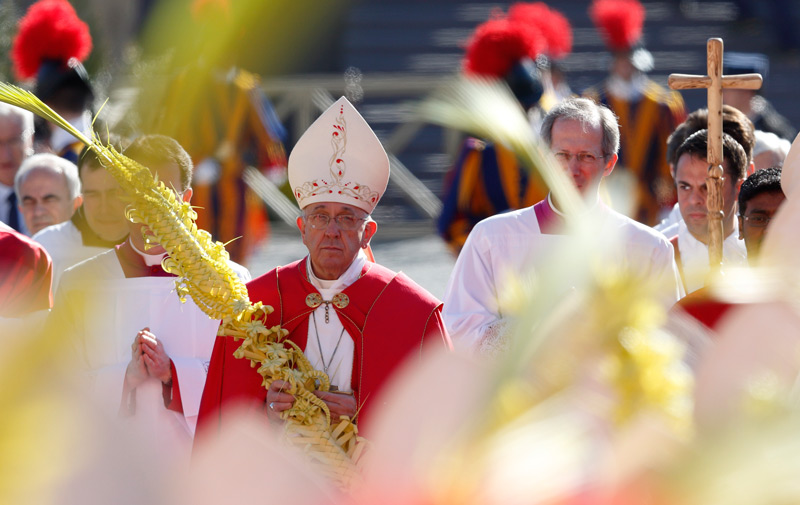
Q: I’ve been trying to read the Bible. I started in Genesis but came across the story of the nephilim (Gen 6:1-4), which apparently are the offspring of angels and human women? What is this all about? Is this something we believe? (Lexington, SC)
A: I’m very grateful for your question, especially because it started with your resolution to read the Bible. It’s important for every Catholic to read, study, and pray the Sacred Scriptures. Thank you for taking this part of our discipleship so seriously. And now to your specific question.
Genesis, Chapters 1-11, are pre-history. This means that these stories were passed along by oral tradition before things were written down. They were literally before history. This clarification is important because it should shape how we read this part of the Bible. Namely, these eleven chapters should be approached with a certain flexibility and an understanding of figurative literature (Catechism of the Catholic Church, #390).
The use of figurative literature is essential to human narratives since it emphasizes a pivotal lesson by using exaggerated figures or events to stress the importance of the lesson. While such an approach can distress our Western empirical minds, figurative language is born from the human heart and has been with the human family since before history.
According to Genesis 6, therefore, the nephilim are the giants born from sexual union between the “sons of God” and the “daughters of man.” It’s possible that in the light of the figurative worldview of the ancient world, the human author of this story actually meant giants, angels, and human women.
If this was the case, the author was most likely figuratively describing a very human phenomenon. We suspect that the sons of Seth, who were the children of God as the grandchildren of Adam and Eve, were attracted to the daughters of Cain, who had been removed from the fellowship of the blessed and were considered “of the earth” since he and his descendants no longer shared God’s blessing. It appears that from such a forbidden union, the children were of incredibly large size, to the point that they were considered a new breed of human beings, namely, the nephilim, or giants.
The lesson of the story is the importance of staying true to the blessing of God and to be cautious in terms of who one marries. It is interesting that within the first few chapters of salvation history, we already see the implicit results of poor sexual partners and the consequences of being “unyoked” to those who chose to live outside of God’s blessings (2 Cor 6:14).
Q: In a previous column you answered that Catholic weddings have to be celebrated in a church. Pope Francis celebrated a wedding on an airplane. Have the rules changed? (Greenville, SC)
A: Yes, Pope Francis dispensed with several aspects of marriage preparation and liturgical law in the well-advertised in-flight wedding he celebrated during his recent apostolic journey to South America.
While this was a surprise in some respects, you might recall from the same column you quoted, that I indicated “for serious reasons” a bishop could suspend the requirement of a wedding in a church. Based on news reports, the spouses in question could not be married in their parish church because it had been destroyed in an earthquake and so the pope decided to celebrate their wedding on the airplane.
It’s important to stress that the authority to make such a decision is reserved to local bishops in their respective dioceses or to the pope and cardinals, who have universal jurisdiction. Parish priests, however, are bound by liturgical law for the reasons explained in the last column.
Father Jeffrey Kirby is administrator of Our Lady of Grace Church in Lancaster. Email him your questions at askfrkirby@gmail.com.



